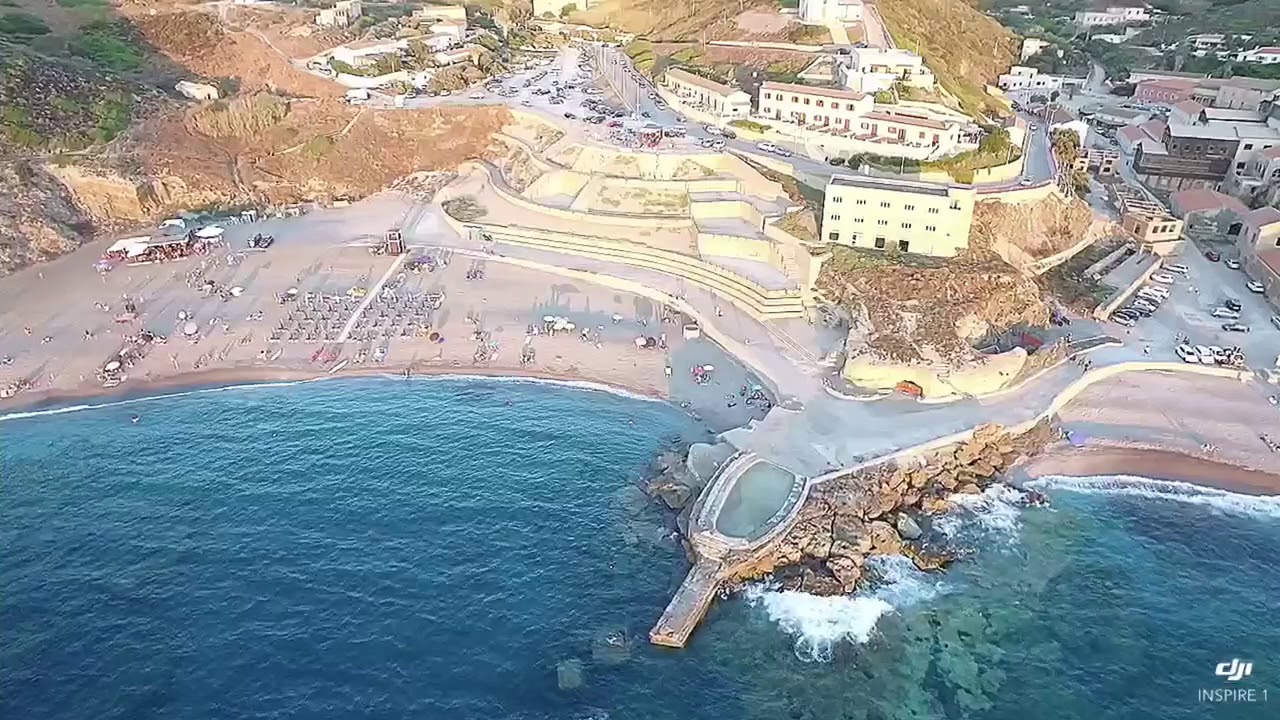Cala dell’Argenteria
Between mining plants and a former mining village, on the Nurra coast in the north-west of Sardinia, sandy stretches emerge immersed in the clear sea. It is the village of Argentiera, an ideal place to relax on the beach or to explore with ad hoc excursions
The Argentiera, one of the most evocative industrial archeology sites in Europe
A ghost village next to mountains of silver slag and ruins of a long-gone mining epic, today an innovative open-air museum. It is the setting of Argentiera, a fraction of Sassari. It was once a village and main mining district of northern Sardinia, thanks to rich deposits of zinc and argentiferous lead, known since Antiquity.
Today it is one of the most evocative industrial archeology sites in Europe, an integral part of the Sardinian geo-mining park. But it is also a seaside town, halfway between Alghero, Stintino and Porto Torres, never crowded, not even in the height of summer. Rich in cliffs overlooking clear waters, coves and sandy expanses. Furthermore, there are few peasant families who live in the village all year round.
The ruins of the old mine overlook the turquoise sea. All around there are rocky walls and promontories covered with thick Mediterranean scrub, which delimit bays accessible from the sea or by land along steep paths in uncontaminated nature, ideal for trekking. Spectacular scenery, set of the opening scene of ‘Wishing Cliff’, with Betty Taylor and Richard Burton (1968).
Cala dell’Argentiera
The upper coast is interrupted by three sandy coves: in Porto Palmas, near the Businco rock and the Argentiera cove. The cove is made up of two semicircular beaches, separated by a small cliff. The sand is compact and has a light amber colour, almost gray due to the mineral dust. The largest of the beaches almost overlooks the main square of the village, the scene of a literary festival at the end of July. The smallest is located to the south, called Cala Onano, dominated by a mining village founded at the beginning of the 20th century and by the pitch-pine wooden washery building from 1936. Today one of the most singular mining monuments.
Furthermore, the seabed of the bay is low and sandy on the shore, made up of rocky plateaus further out. Spurs with ravines and cavities stand out, habitat for a great variety of life forms and a destination for snorkelling enthusiasts. Here you can rent beach equipment, pedal boats and canoes. There is no shortage of refreshment points and ample parking, also suitable for campers.
From the village there are two dirt roads that lead to the head and the tip of Argentiera. To the south, after two kilometers, you will come across Porto Palmas, the only landing place within a radius of a few miles. The beach is a crescent of white sand among dark rocks, with low cliffs on the sides that protect it from wind and currents. North of the Argentiera the dirt road that can be traveled by off-road vehicles proceeds parallel to the cliff for a few kilometres. You will admire a smooth surface of lava rock, shaped by water and wind, which takes on features of a lunar landscape and surrounds coves with panoramic points. The road, now asphalted, continues up to Lampianu beach, near the disused Nurra village. Finally, you arrive at Punta de Lu Nibaru, in front of the Businco rock.
Argentiera, a former mining village
The Argentiera mining activity lasted exactly a century starting from 1867. The mine passed from one company to another, with ups and downs. The peak of development between the end of the 19th and the first decades of the 20th century. A significant legacy recently being valorised, which began with the environmental regeneration and urban redevelopment of the village, and continued in 2019 with the creation of Open MAR, an innovative open-air museum, a meeting of historical memory, art and new technologies.

